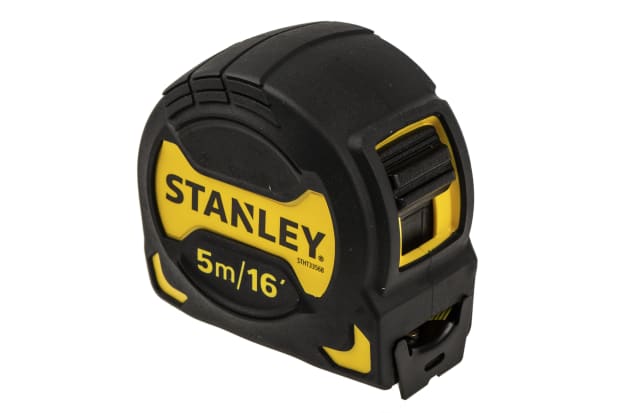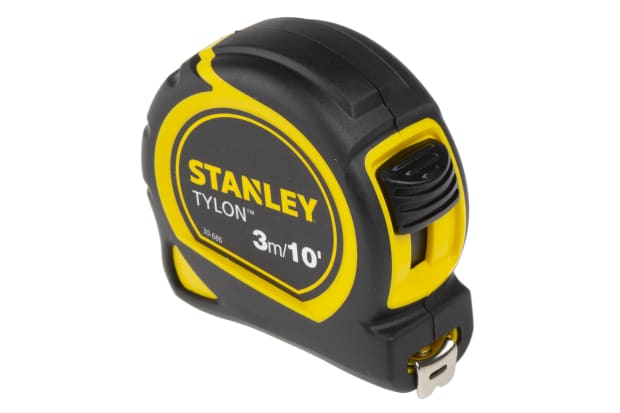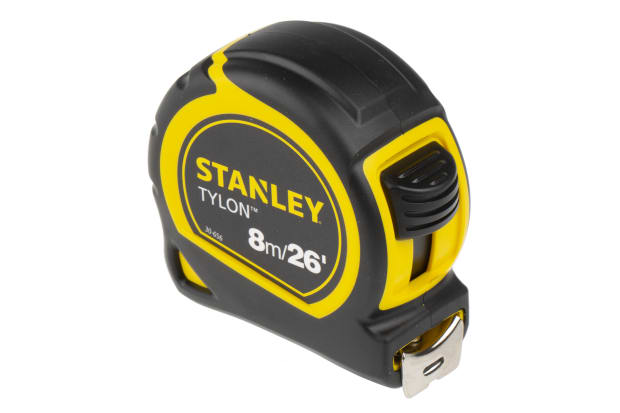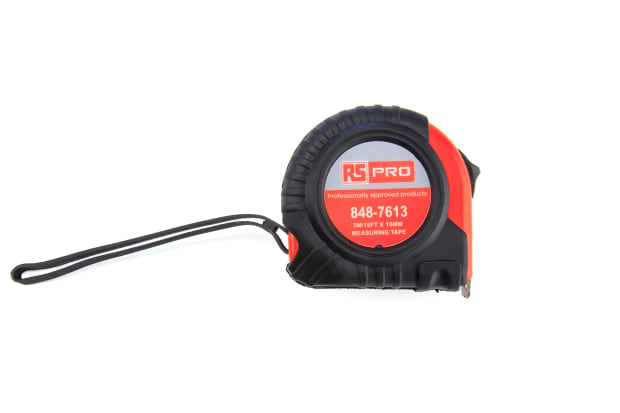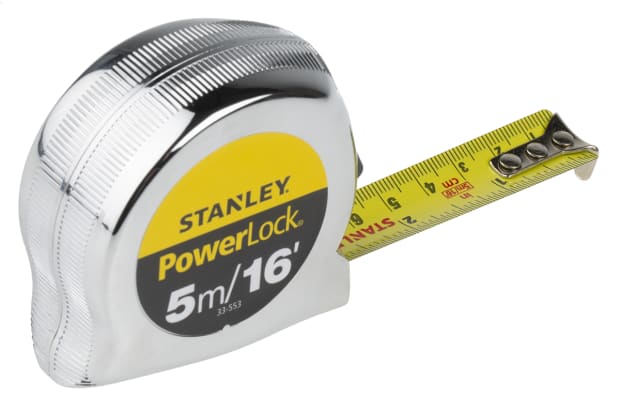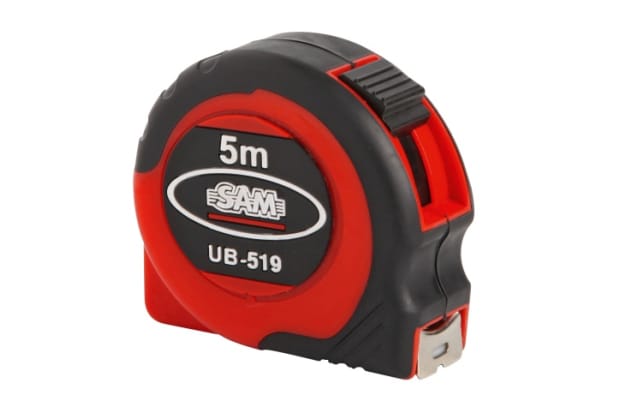- Published 11 Jan 2023
- Last Modified 29 Aug 2023
- 7 min
A Complete Guide to Tape Measures
Learn all about measuring lengths and distances with tape measures in this comprehensive guide.

Reviewed by David Carmichael, Technical Support Engineer (August 2021)
What is a Tape Measure?
A tape measure is a flexible instrument used for measuring lengths and distances. It is essential for many industries and applications. From dressmaking to carpentry, there is no doubt that measuring tapes are exceptionally popular tools, available in different types and sizes to suit bespoke requirements.
Despite the variety of shapes and functionalities, most share a basic structure. This includes a plastic, steel or fabric strip onto which measurement graduations are marked. Normally, marks are black and red on a yellow background, as this is the best colour combination to make it easy to read.
Popular Tape Measures
Types of Tape Measures
The different applications and environments where measuring tapes are needed will play a role in determining the best choice of tool. There are many types and designs suitable for different applications, from surveying and carpentry to DIY. Textile tapes are also essential for sewing and for body measurement, for medical and well-being reasons.
When choosing the correct tape measure, you should take various factors into account. These include:
- Available types
- Your budget
- The environment where the tape will be used
- The level of accuracy required
Tapes come in different types to suit every need and profession. As a result, they can be found in different materials, measuring systems, lengths, and output formats.
1. Materials
The material a tape measure is made from is typically defined by its intended application.
Dressmaker’s tape measures, haberdashery and sewing tape measures are normally made of cloth, soft fabric, or plastic fibreglass. This provides the best combination of accuracy and flexibility while measuring. Fabric tape measures can come as either retractable tape measures, encased in a protective container, or as standard rolling tape measures.
On the other hand, surveyor’s tape measures are typically made of rigid materials, such as fibreglass and steel. This ensures durability, impermeable properties, and resistance to damage. These are key features in the choice of the best tape measures for surveying and construction.
Most surveyor’s tapes feature a hook that folds around an object or anchors on the ground. This provides an easier way to keep track of the starting point and is especially useful when measuring longer distances.
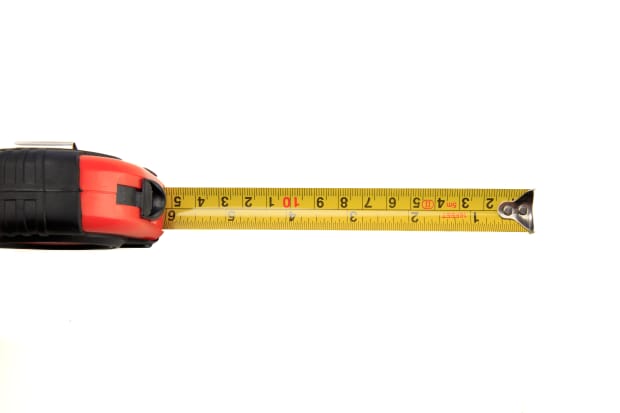
2. System of Measurement
There are different kinds of graduations that can be displayed on the blade of the tape measure:
- Metric: Length and distance are measured in m, cm and mm. Metric measurements are now most commonly used globally
- Imperial: Length is measured in inches, feet and yards. Imperial tape measures are less common but are still used in the UK and North America
Most tapes display both metric and imperial measurements on opposite sides of the blade. However, for those who prioritise the ease of reading over the availability of different measurement scales, metric-only versions are also available.
3. Lengths
Tape measure length may also differ according to the application and environment where it is used.
- Short measure tapes: Also known as pocket tapes, these are mostly used in clothes making, body measuring, and DIY applications. In these kinds of tapes, the self-retracting blade is generally encased in a rigid protective casing. They normally present a hook (an auto-lock mechanism to keep the blade or the tape body in place without retracting) and a belt clip to keep them handy. Measuring tapes can even be as small as a keyring, which is useful when you want to have one on you at all times without the hassle of carrying a standard size instrument around
- Long measure tapes: Designed mostly for engineering and industrial work, long tapes can measure up to 500 feet (around 150 metres). They are normally encased as reel tape measures, which can be either closed or open
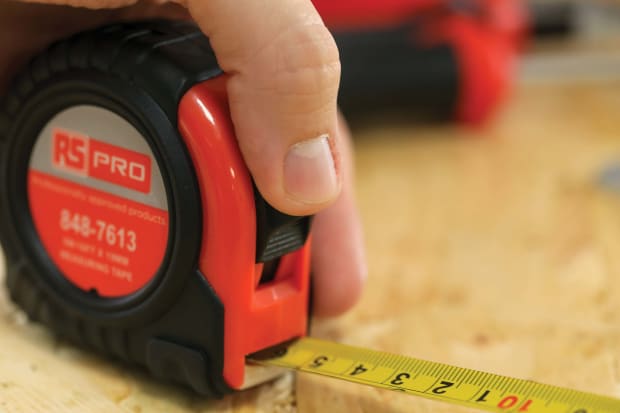
4. Output Format
- Analogical tape measures provide the output via the markings on the strip or blade. Therefore, the precision of the measurement does not only depend on the accuracy of the tape itself but also on the measurer’s attention to detail
- Digital measure tapes are very similar to a standard encased tape, featuring a metal hook to be anchored to the starting point of measurement. The only difference is that the readout signal comes from an integrated digital display on the top, which minimises the error that might arise from measuring by eye
5. Other Tape Measure Types
- Infrared and laser measures: These do not feature a physical tape or blade, but they do share the same measuring function as a traditional instrument - especially for longer distances. They use laser pointer targets to assess the distance between point A and point B, combining high precision with an ergonomic design
- Magnetic tape measures: Their main feature is the presence of two magnets - one at each end. This ensures that they stick to any ferrous material and make measuring easier
- Measuring sticks: Despite not being a tape in the proper sense of the word, measuring sticks are also a popular measuring instrument used by shoemakers, as well as a drawing tool that helps with the creation of straight lines. They are normally wooden or made of plastic, and can be found in different lengths that range from a few centimetres to one metre. Some types may also be foldable and extendable, allowing for easier use and storage
Popular Brands
Various trusted brands provide measurement tools, whether you need a cheap tape measure for everyday use, or you are on the lookout for a specialist instrument.
Some of our most popular suppliers include:
Tape Accuracy
When it comes to precision work, tape accuracy is a key factor. It is determined by standards set out by the European Committee which divide the category into three classes according to their level of accuracy.
- EC Class I: These are the most accurate tape measures on the market. They tend to be slightly more expensive than the average DIY tool, but are perfect for professional work where precision is essential. The maximum error expected in class I tapes is of 1.1 mm in 10 metres – 0.001% of margin
- EC Class II: Providing slightly less accurate measurements than class one, but still significantly more precise than the average commercial tape. Suitable for most uses, the maximum error expected over 10 metres total length is 2.30 millimetres – slightly more than 0.002%
- EC Class III: The least accurate on the scale, therefore they might be preferred where a difference of a few millimetres does not make a difference to the overall project. The maximum margin of error on a 10-metre-long measure is 4.60 millimetres – 0.004% difference
Deviation ± mm Over Total Length
Length | Class I | Class II | Class III |
|---|---|---|---|
2m | 0.30 | 0.70 | 1.40 |
3m | 0.40 | 0.90 | 1.80 |
5m | 0.60 | 1.30 | 2.60 |
8m | 0.90 | 1.90 | 3.80 |
10m | 1.10 | 2.30 | 4.60 |
In applications where accuracy and precise measurement are of paramount importance, consider measuring tapes with certified calibration certificates. We stock a wide range of high-quality instruments that are calibrated and certified by our expert team.

Did You Know?
Tape measures have undergone various tweaks and transformations over the years, but they have been around for a while. In fact, the first rudimental instrument dates back to the Roman era, when marked strips of leather were used as measuring instruments.
The longest tape measure in the world was a 600 feet (183 metres) gold-plated tape created by Justus Roe, an American surveyor and tape-maker, in 1956.
